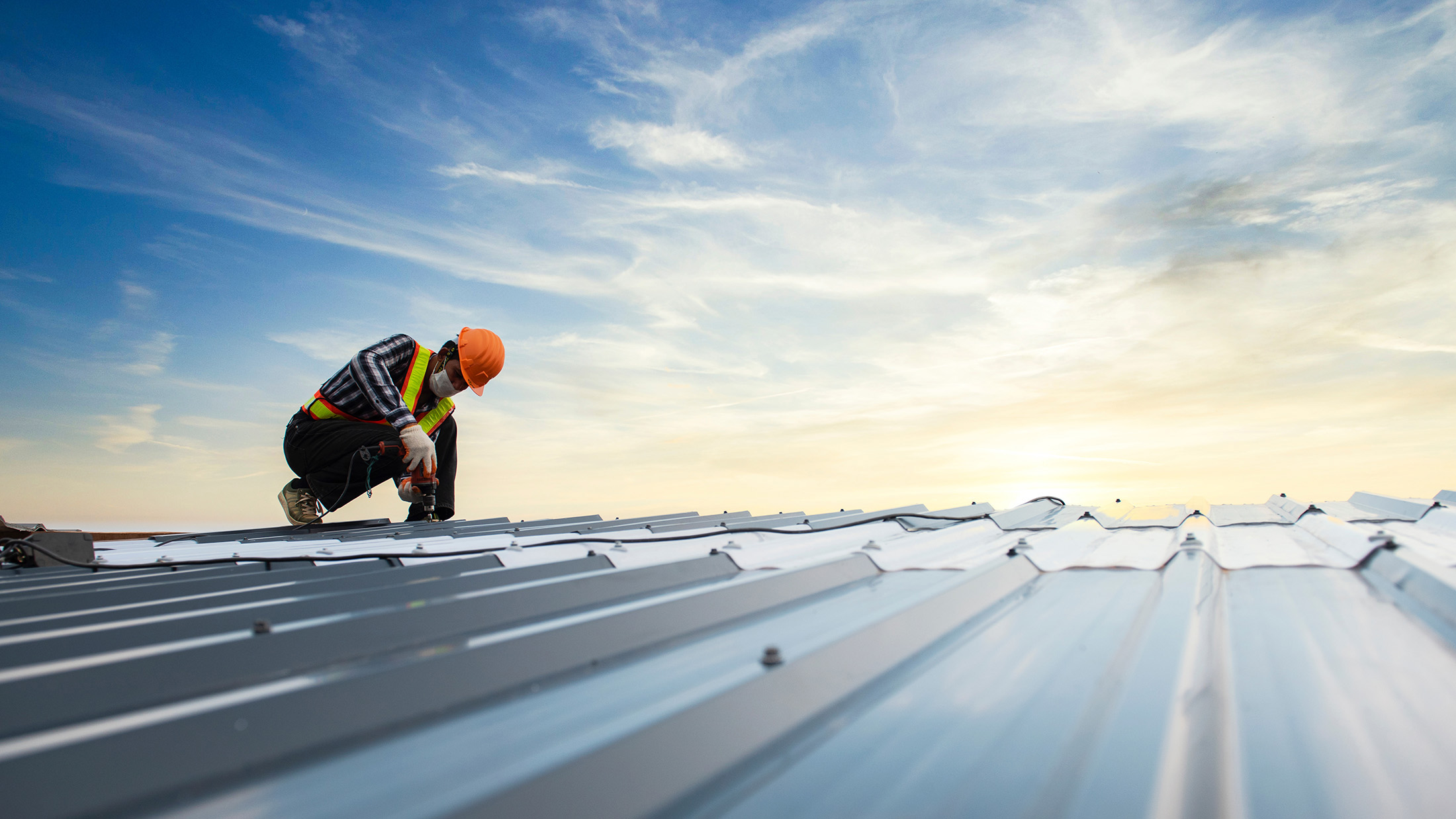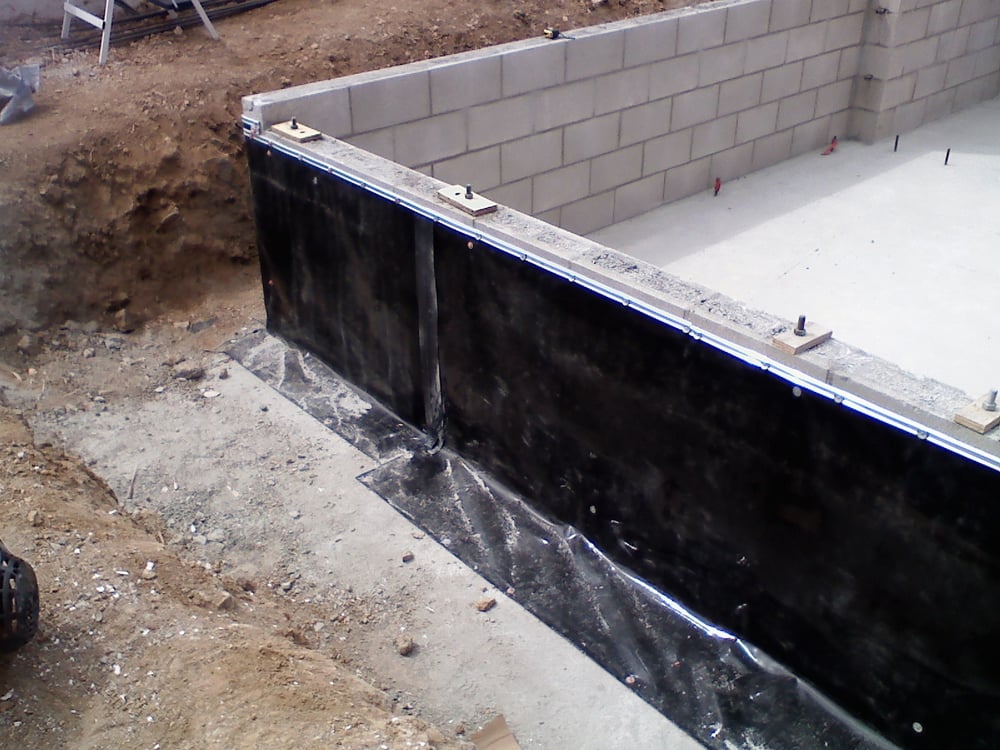How Yard drainage Omaha Can Stop Soil Erosion
Wiki Article
How Waterproofing Works: A Thorough Look at Methods and Technologies
Waterproofing is important for shielding frameworks from moisture-related damages. It entails different methods and technologies that produce barriers versus water breach. Typical methods, such as compacted clay, coexist with modern advancements like liquid-applied membranes. Recognizing the subtleties of these methods is essential for efficient application. However, the efficiency of any type of waterproofing option hinges not just on the techniques made use of yet also on ongoing maintenance and evaluation. What are the crucial variables that influence lasting performance?Understanding the Basics of Waterproofing
Waterproofing is an important procedure that shields frameworks from water breach, which can lead to significant damage with time. This method entails the application of various products and techniques developed to develop an obstacle versus moisture. The key objective is to avoid water from penetrating surfaces, which can trigger wear and tear, mold and mildew development, and architectural instability.Various variables affect the selection of waterproofing method, consisting of the sort of structure, its location, and ecological conditions. Comprehending the physics of water movement and the properties of different products is essential in picking an effective waterproofing solution.Effective waterproofing not only safeguards buildings yet likewise boosts their longevity and integrity. Generally, it is integrated into the layout phase of building to assure thorough protection. As awareness of water-related concerns grows, the importance of understanding waterproofing fundamentals ends up being significantly clear to designers, building contractors, and residential or commercial property owners alike.Conventional Waterproofing Methods
Standard waterproofing methods have actually been used for centuries, depending on tried and true techniques and products to guard structures from water damage. One of the earliest approaches entails using clay, which, when compressed, develops an all-natural obstacle versus moisture. In addition, bitumen, a sticky, black product originated from oil, has actually been utilized for its waterproof properties, usually related to roof coverings and foundations.Another strategy includes the application of lime-based plasters, which supply a breathable layer that allows dampness to leave while protecting against water access. Thatch roofing, a conventional method still seen in some societies, offers excellent waterproofing because of its securely packed straw layers.Moreover, making use of stone and block has actually been noticeable, as these products are inherently immune to water when appropriately installed. On the whole, typical waterproofing methods highlight the importance of selecting ideal products and building practices to improve sturdiness against water invasion.Modern Waterproofing Technologies
Advancements in modern waterproofing modern technologies have actually changed the means frameworks are protected from water damage. Cutting-edge approaches such as liquid-applied membranes and innovative sealants have improved the efficiency and convenience of waterproofing services. These modern technologies permit smooth application, lowering the risk of leakages and guaranteeing extensive coverage over complex surfaces.Moreover, the integration of wise modern technologies, such as wetness sensors and automated surveillance systems, makes it possible for real-time assessment of waterproofing performance. This positive method helps with prompt upkeep and minimizes long-term repair work costs.Additionally, innovations in spray-applied coatings offer fast application and exceptional adhesion, adjusting to various substratums while offering robust protection. Strategies like polymer-modified systems additionally boost adaptability and toughness, making them ideal for varied settings. Generally, contemporary waterproofing modern technologies not only minimize water intrusion yet likewise add to the durability and sustainability of structures, marking a substantial shift in the industry.Materials Used in Waterproofing
The effectiveness of waterproofing options greatly depends on the products made use of in their application. Different materials are employed to develop obstacles versus water ingress, each with special buildings matched for various atmospheres. Frequently utilized materials consist of membranes, layers, and sealants.Liquid-applied membranes, usually made from polyurethane or acrylic, create a smooth barrier that adjusts to complex surfaces. Sheet membranes, generally created from rubber or thermoplastic, offer toughness and are optimal for larger areas. Furthermore, cementitious waterproofing products, made up of cementitious link substances, give outstanding bond and flexibility.Sealants made from silicone or polyurethane are vital for joints and joints, ensuring detailed protection. Additionally, innovative materials, such as geo-composite membranes, integrate numerous functions, enhancing efficiency. On the whole, the choice of over here waterproofing materials is vital in achieving durable and reliable water resistance, customized to specific task needs and ecological conditions.
Typical Applications of Waterproofing
Waterproofing plays an essential duty in numerous fields, ensuring the durability and honesty of structures. Usual applications include property remedies that safeguard homes, industrial framework that safeguards organizations, and industrial settings that need robust protection versus dampness. Comprehending these applications highlights the value of waterproofing in maintaining both safety and functionality throughout various environments.Residential Waterproofing Solutions
Several property owners encounter difficulties with dampness breach, making reliable residential waterproofing options vital. Different approaches exist to resolve this issue, including exterior and interior waterproofing systems. Inside solutions typically involve the application of sealers and finishes to basement walls, which assist protect against water infiltration. Outside approaches commonly include the installment of drain systems and water resistant membrane layers that divert water far from the foundation.Additionally, home owners might take into consideration sump pumps to get rid of water buildup and dehumidifiers to regulate moisture levels. Correct grading and the usage of gutters additionally play a vital duty in taking care of water flow around the home. By carrying out these techniques, homeowners can greatly minimize the danger of water damage and mold and mildew development, ensuring a dry and secure living environment.
Business Facilities Protection
Efficient waterproofing solutions play a critical function in the defense of business infrastructure. Yard drainage Omaha. These strategies are necessary for securing buildings, auto parking structures, and bridges from water damage, which can jeopardize structural integrity and bring about costly repair work. Typical applications include the setup of membrane layers, finishes, and sealants that create barriers versus wetness infiltration. Areas such as cellars, roofings, and outside wall surfaces are typically prioritized to guarantee longevity and resilience. Additionally, waterproofing systems can boost power efficiency by protecting against water-related problems that may lead to mold growth and wear and tear. By executing durable waterproofing procedures, homeowner can safeguard their financial investments and keep functional performance, eventually adding to the overall sustainability of industrial facilitiesIndustrial Applications Introduction
While numerous industries deal with unique obstacles, the requirement for trustworthy waterproofing options continues to be a consistent in commercial applications. Industries such as manufacturing, construction, and power often experience atmospheres where moisture direct exposure can threaten structural stability and functional performance. In manufacturing centers, waterproofing is essential for protecting equipment and products from water damages. In building, it safeguards bituthene waterproofing structures and basements against groundwater infiltration. The power market depends on waterproofing for the security of tools in hydroelectric plants and offshore structures. In addition, food handling markets make use of waterproofing to ensure hygiene and conformity with safety and security standards. Overall, effective waterproofing solutions are crucial for boosting toughness, safety, and performance throughout different commercial setups.
Upkeep and Long Life of Waterproofing Solutions
Waterproofing solutions are designed to supply lasting security against moisture invasion, routine maintenance is vital to assure their efficiency and long life. Regular examinations play a considerable role in determining potential concerns such as cracks, peeling, or signs of water damages. Attending to these problems quickly can protect against more deterioration and costly repairs.Additionally, cleaning the surface area of waterproofed locations aids remove dust and debris that could jeopardize the stability of the waterproofing barrier. It's likewise a good idea to reapply safety finishings or sealers as recommended by manufacturers to preserve perfect efficiency. Ecological elements, such as UV direct exposure and severe weather problems, can impact the life-span of waterproofing materials, making regular evaluation crucialOften Asked Questions
Can Waterproofing Be Applied in Cold Climate?
The question of using waterproofing in cold climate raises issues about adhesion and curing. Numerous products might not perform at their ideal in low temperatures, necessitating cautious choice and factor to consider of certain guidelines for efficient application.For How Long Does Waterproofing Typically Last?
The period of waterproofing effectiveness varies based upon materials and environmental factors. Normally, it can last from five to 10 years, yet normal upkeep and examinations are vital to guarantee peak performance and longevity.Is DIY Waterproofing Effective and Safe?
The performance and safety and security of DIY waterproofing depend on different factors, including worldly high quality and application strategy. While some people attain satisfactory results, others may experience issues that jeopardize lasting defense and architectural honesty.What Are the Indicators of Failing Waterproofing?
Signs of failing waterproofing include noticeable water stains, peeling off paint, mold growth, musty smells, and moisture in walls or ceilings - Foundation waterproofing Omaha. These indications suggest jeopardized barriers, demanding prompt evaluation and possible remediation to stop more damageJust how Do I Select the Right Waterproofing Service Provider?

Report this wiki page